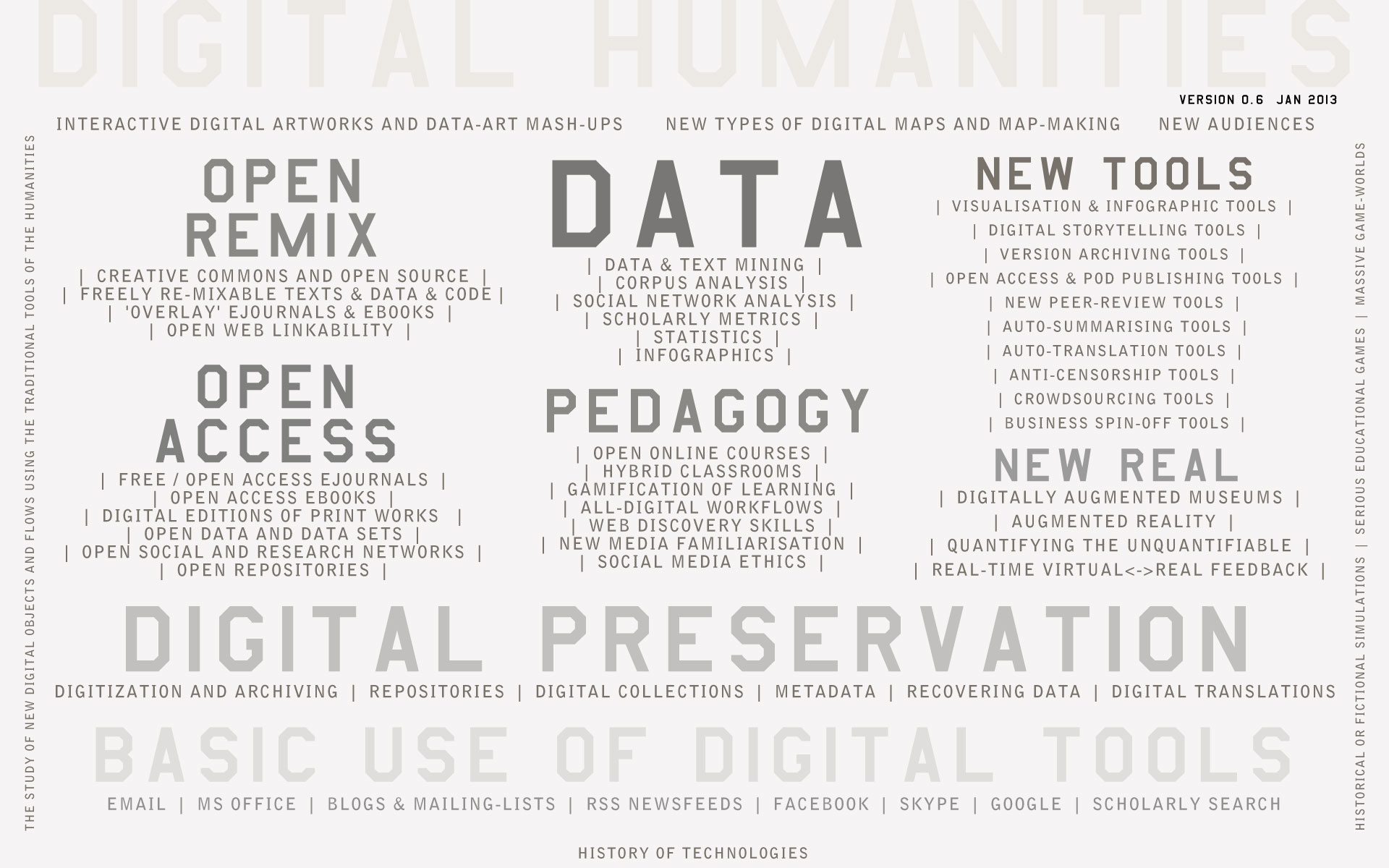Since the Huffington reports that… “The backlash against so-called ‘Digital Humanities’ (DH) has begun in earnest,” I thought I’d spend a merry hour with Photoshop and put together a quick at-a-glance map of the way I see the digital humanities at January 2013. It might be useful, at the start of such a flame-war debate, to have at least one neat visual of what the digital humanities seem to encompass.
Digital humanists may already be popping their pods at the upstart presumption of my doing this, yet I can’t find any online evidence that they’ve published anything similar. Concise corrections and suggestions are welcome…
By “new media familiarisation” in pedagogy I mean structured programmes of hands-on experience: “profs play videogames, etc” but also “students venture outside their own little tech-bubble”.
By “real-time virtual-real feedback” I mean our ability to place cheap sensors in the real world that feed data into online services in real-time, and thus affect people’s behavior in the real world. Behaviors which the sensors then feed back into the virtual environments, in a never-ending loop.
“Quantifying the unquantifiable” might have read, for clarity: “Quantifying those aspects of the real world which were formerly unquantifiable”, but that was a tad too long to fit. And yes, I do realise that the idea of “the real” as something separate from human culture is contested. A bridge is an objectively real structure yet it arises from human culture, for instance — but we only wish to cross a bridge if it rests on immutable and objectively real laws of physics and geometry. Thus, “the real”.
Those outside of the arts and humanities may wonder why I included the most basic layer. It’s because the research shows that many of our academics are still very much dragging their feet in the use of even basic digital tools, and it seems to me to be part of the digital humanities project to hope to bring them into the 21st century.


Hi there. Would you be happy to let me use your image above for a Digital Humanities Library Guide? I would attribute and link back to this page. Since it is now 2016 – did you ever do another version?
Yes, that’s fine – so long as you’re not also putting it under Creative Commons.